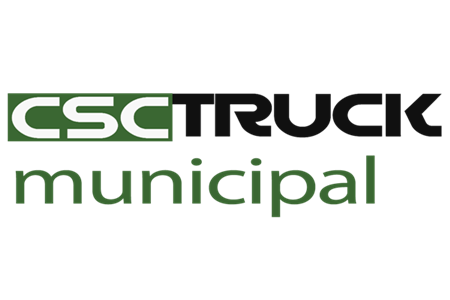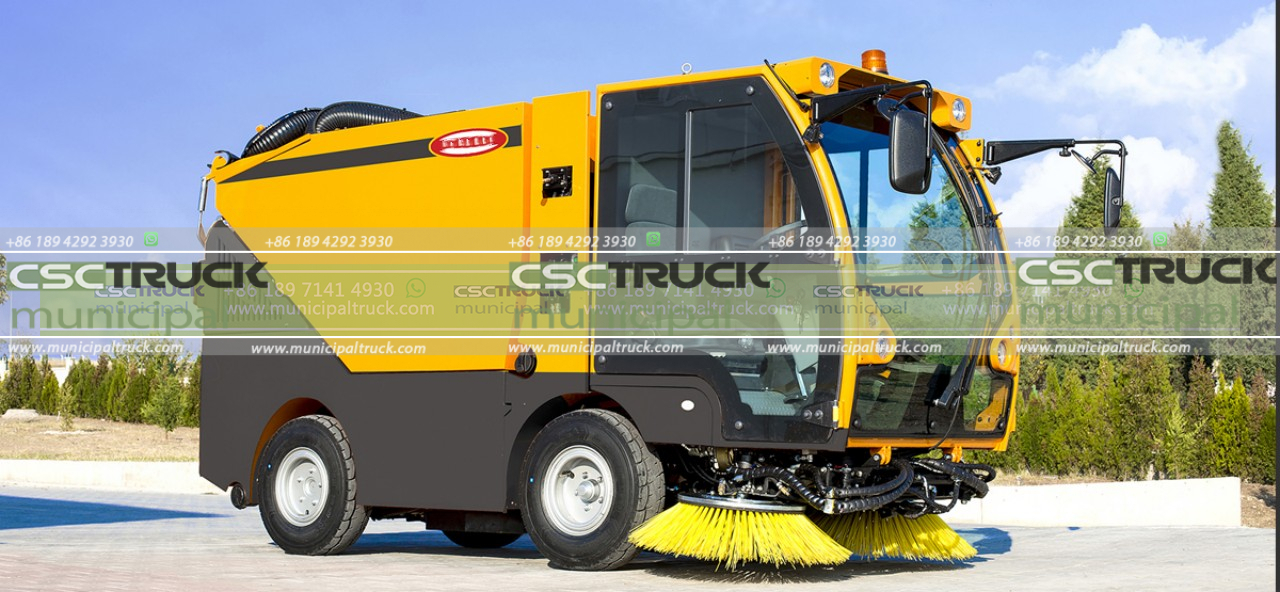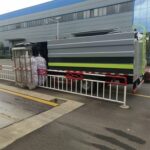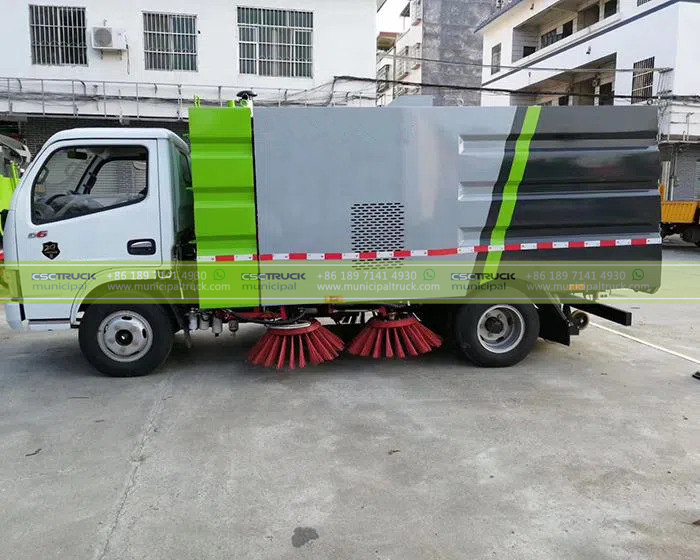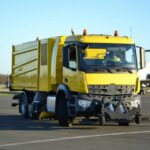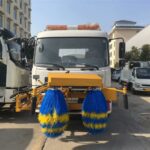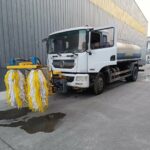The Unseen Challenge of Urban and Industrial Debris
Modern infrastructure – from sprawling highways and intricate fencing systems securing critical facilities to vast airport perimeters – constantly battles the relentless accumulation of debris. Leaves, litter, sand, gravel, plastic fragments, and even hazardous materials collect daily, posing safety risks, environmental hazards, and aesthetic concerns. While the image of a sweeper truck with spinning brooms is familiar, the true technological marvel, and the unsung hero of effective cleaning, lies hidden within: the advanced filtration and debris collection system. This sophisticated engineering is what transforms a simple sweeper into a powerful, efficient, and environmentally responsible Fence Sweeper Truck, capable of tackling diverse challenges across demanding environments like airports and industrial zones.
Engineering the Capture: Multi-Stage Filtration Mechanics
The core mission of any sweeper is not just to dislodge debris, but to effectively capture and contain it, preventing redeposition and minimizing airborne pollutants. Modern high-efficiency systems achieve this through a meticulously designed multi-stage filtration process:
- Primary Separation – Cyclonic Force: The journey begins as powerful suction draws the dislodged debris-laden air into the hopper. Here, cyclonic separation technology takes center stage. By inducing a high-velocity vortex, centrifugal forces fling heavier particles (sand, gravel, larger litter) directly towards the hopper walls, where gravity deposits them into the collection chamber. This initial stage efficiently removes the bulk of the material, significantly reducing the load on subsequent finer filters and enhancing overall system capacity and longevity.
- Secondary Filtration – Capturing the Fines: Air carrying finer particulate matter (dust, silt, fine sand) exits the cyclone and enters the secondary filtration zone. This typically involves a series of large, durable fabric filter bags or advanced cartridge filters constructed from specialized synthetic materials. These filters act as a physical barrier, trapping particles down to the micron level. Critical to sustained performance is the robust filter cleaning system – usually a combination of reverse pulsed air jets and mechanical shaking mechanisms – which dislodges accumulated dust from the filter media, maintaining optimal airflow and filtration efficiency throughout the operational cycle.
- Tertiary Safeguard – The Final Barrier (Optional but Increasingly Common): For applications demanding the highest air quality standards, such as indoor warehouse cleaning or environments sensitive to ultra-fine particulates, a tertiary stage utilizing High-Efficiency Particulate Air (HEPA) filters or similarly efficient final filters may be employed. This ultimate barrier captures particles as small as 0.3 microns with over 99.97% efficiency, ensuring exhaust air is exceptionally clean, protecting both the environment and nearby personnel from respirable dust.
Optimizing Performance: Efficiency, Capacity, and Smart Systems
Beyond the fundamental mechanics, advancements focus on maximizing operational uptime and effectiveness. Hydrodynamic filtration systems, sometimes integrated, use precisely controlled water sprays to agglomerate fine dust particles before they reach the primary filters, making them easier to capture and significantly reducing filter clogging, especially in extremely dusty conditions. Large-volume debris hoppers, often featuring efficient compaction systems, allow the Fence Sweeper Truck to cover extensive areas like lengthy perimeter fencing or large industrial yards without frequent interruptions for unloading. Furthermore, integrated monitoring systems track crucial parameters like filter differential pressure, hopper load level, and system airflow in real-time, providing operators with diagnostics and alerts to proactively manage maintenance and prevent performance degradation.
Specialized Applications: Precision on the Tarmac
The demands of airport sweeper truck operations exemplify the critical need for advanced filtration. Runways, taxiways, and aprons are uniquely vulnerable to Foreign Object Debris (FOD). Even small stones, loose hardware, or plastic fragments pose catastrophic risks to aircraft engines and tires. Advanced filtration systems in airport sweepers are non-negotiable, designed for maximum debris capture efficiency and reliability. They must handle diverse FOD, from metal shards to rubber fragments and de-icing fluid residues, while ensuring exhaust air doesn’t blow debris back onto critical surfaces. Redundancy and rigorous maintenance protocols are paramount, underpinning the relentless focus on safety that defines aviation ground operations.
The Environmental and Operational Imperative
The relentless pursuit of cleaner filtration technology in sweeper trucks, including robust road sweeper truck fleets maintaining our highways, transcends mere compliance; it represents a significant environmental stewardship commitment. By drastically reducing the emission of fine particulate matter (PM10 and PM2.5) – known contributors to respiratory problems and environmental pollution – these advanced systems directly improve urban air quality for residents and workers alike. Simultaneously, maximizing debris capture efficiency prevents pollutants and litter from being washed into storm drains during rain events, thereby safeguarding waterways and reducing the burden on water treatment facilities. This dual benefit – cleaner air and cleaner water – underscores the indispensable role sophisticated filtration plays in creating sustainable, healthier communities and workplaces, proving that the unseen technology within these machines delivers impact far beyond the visible sweep.
